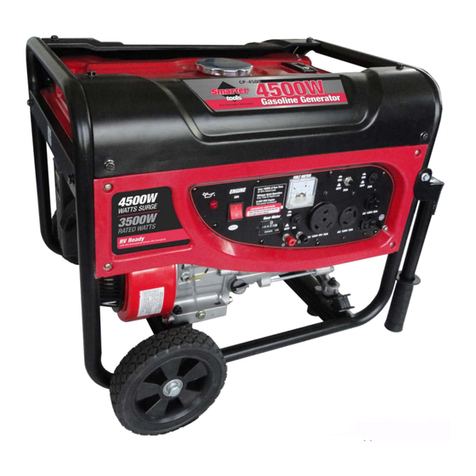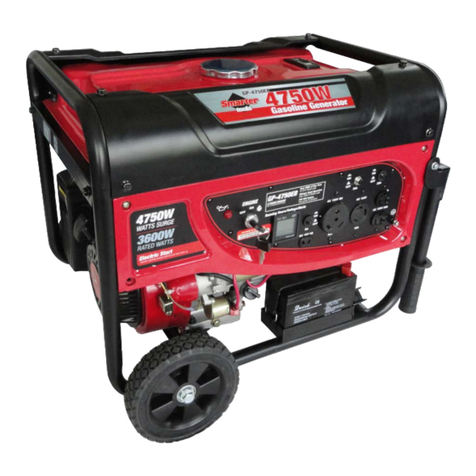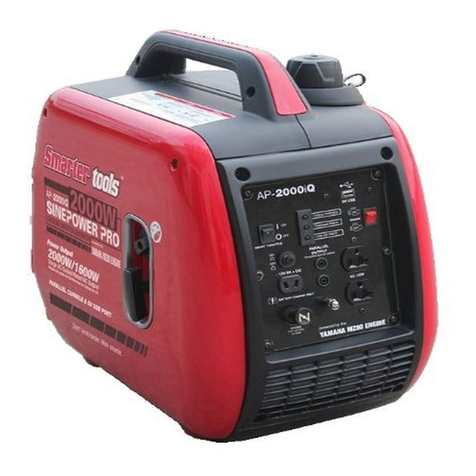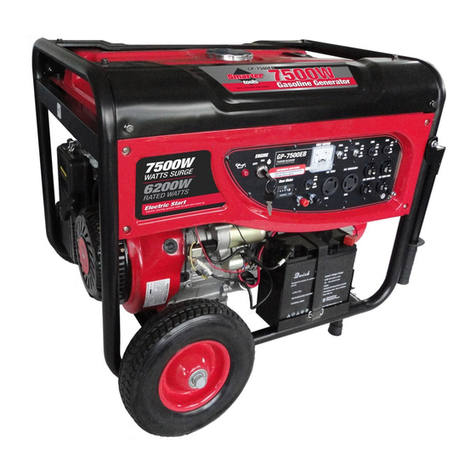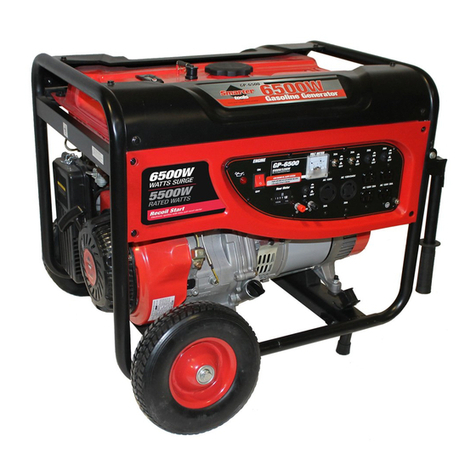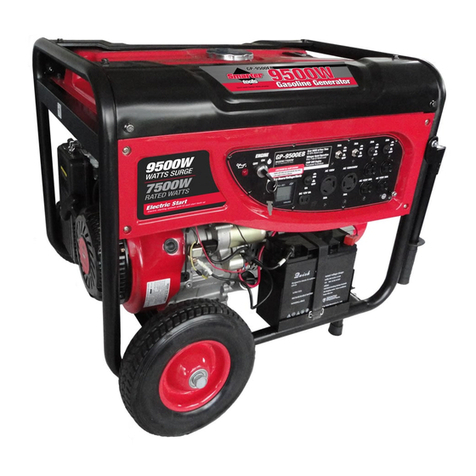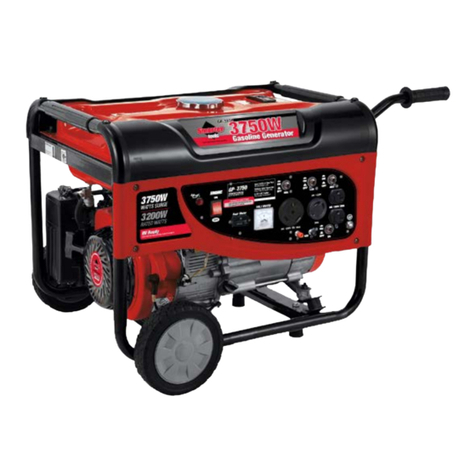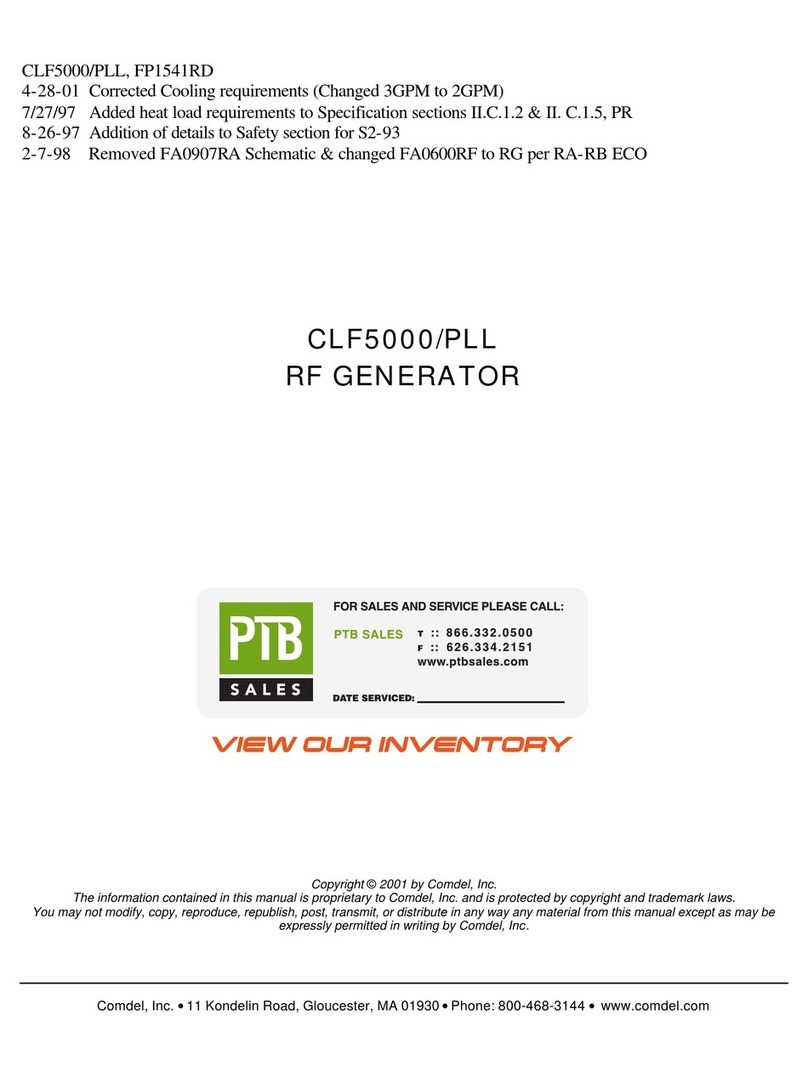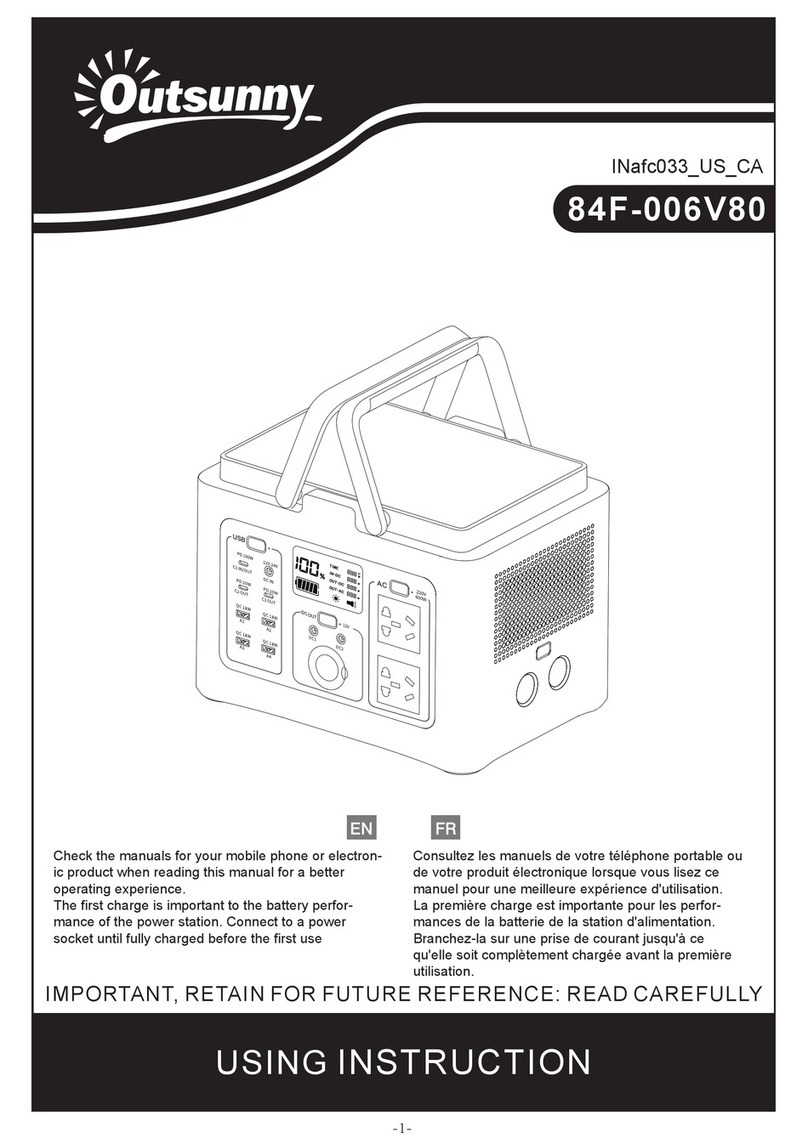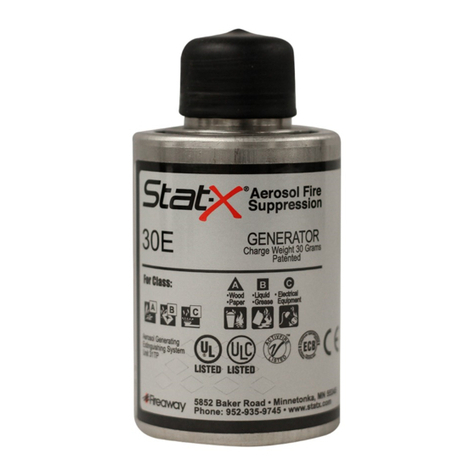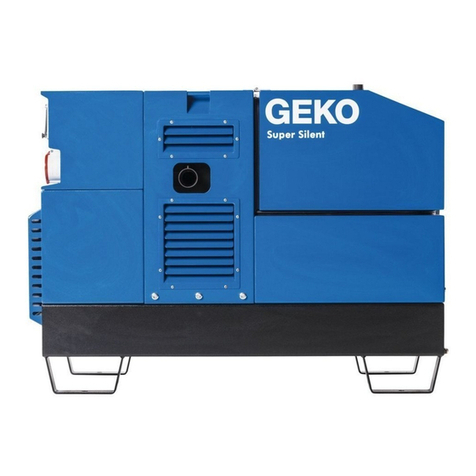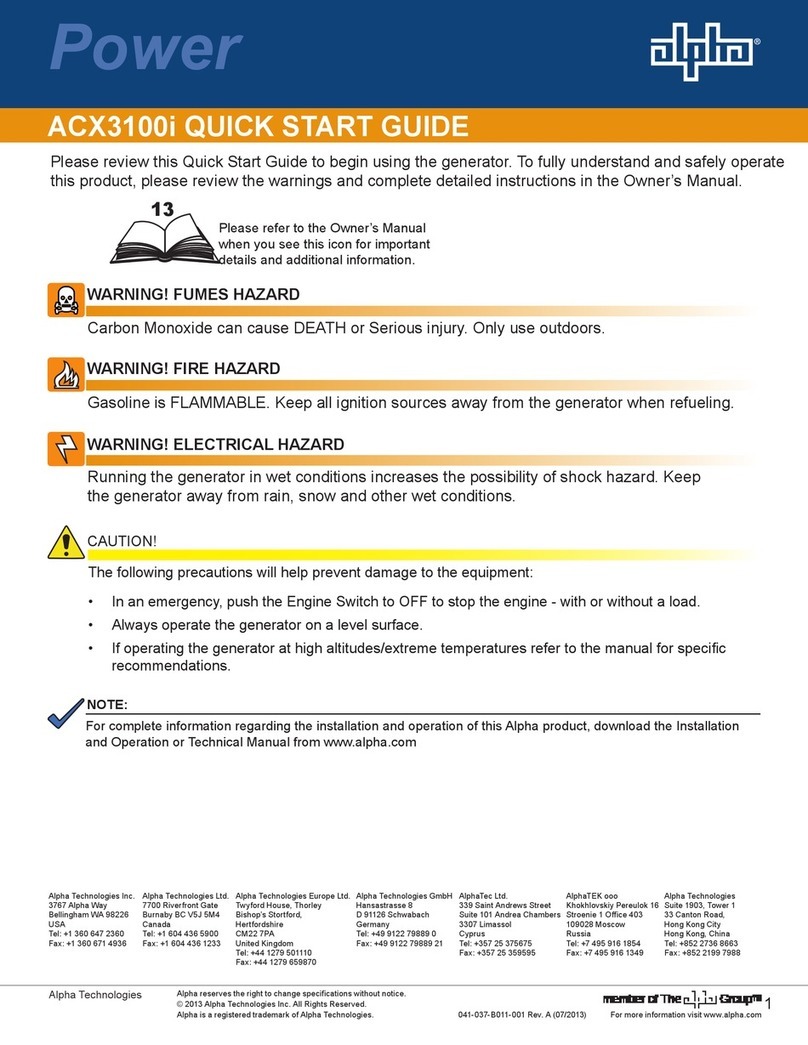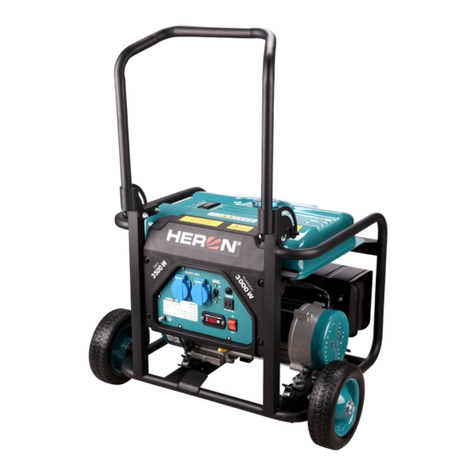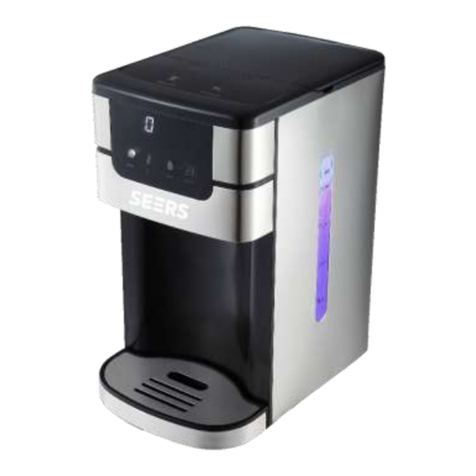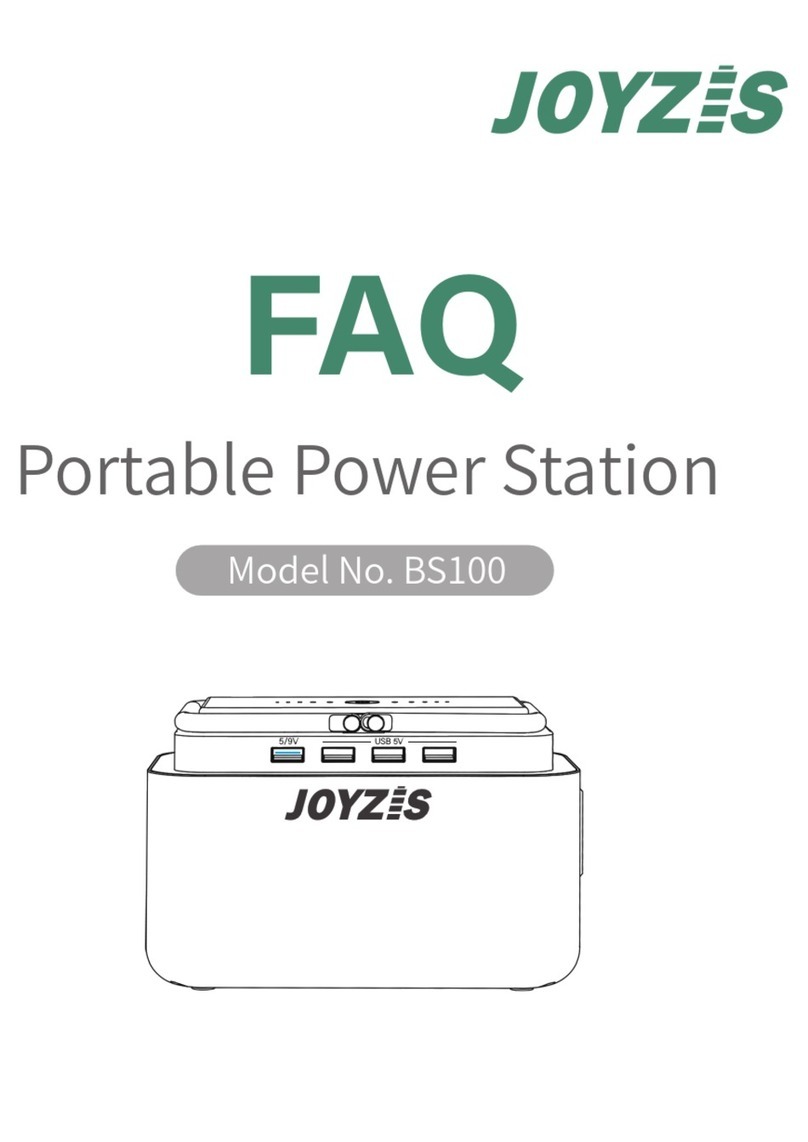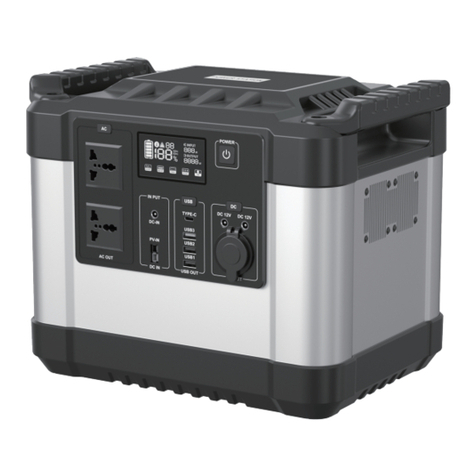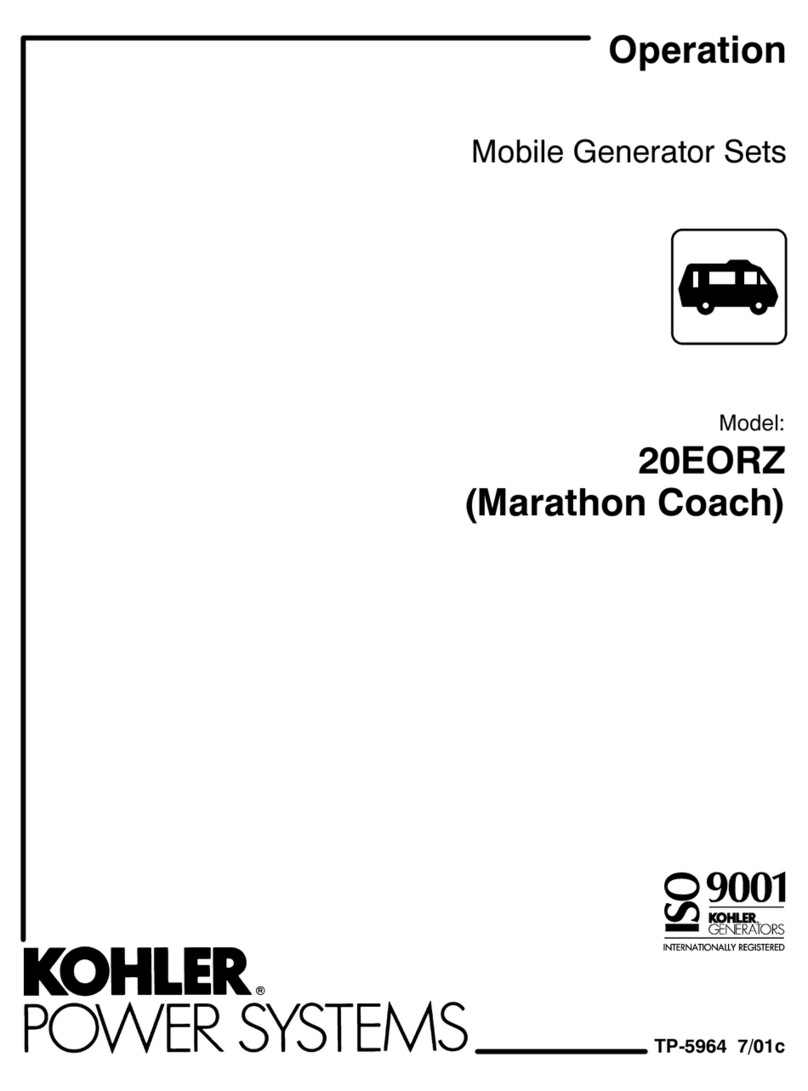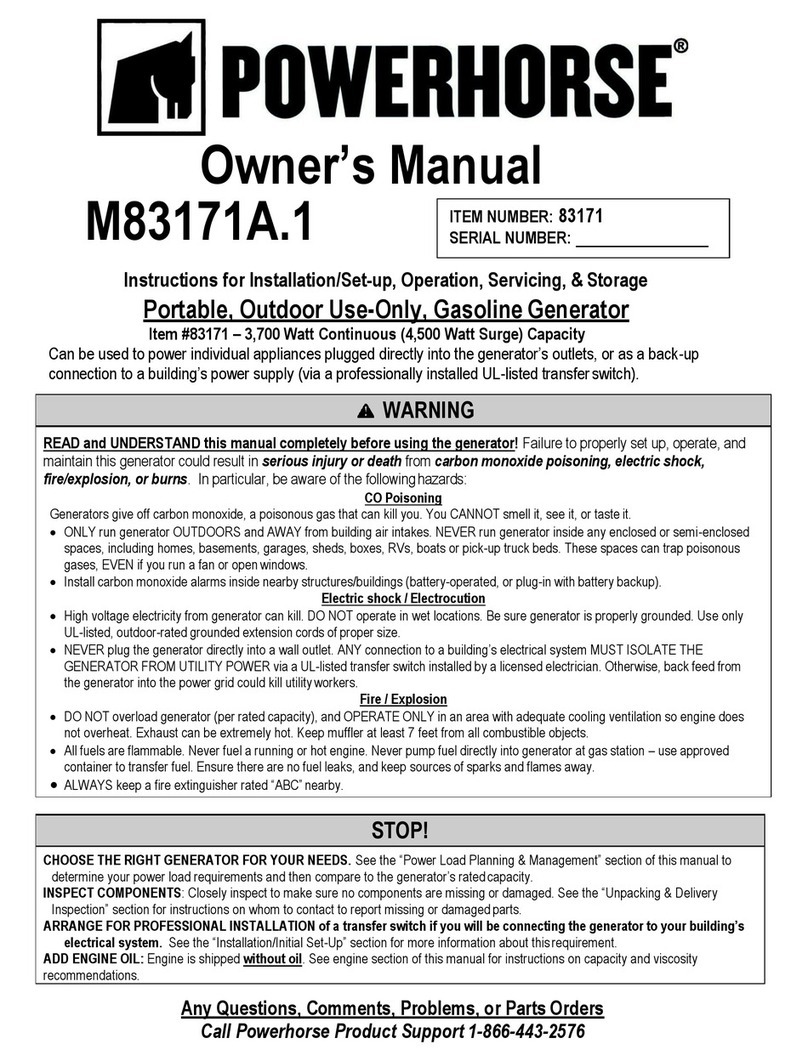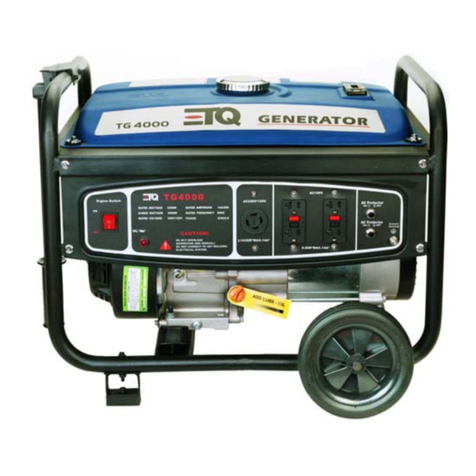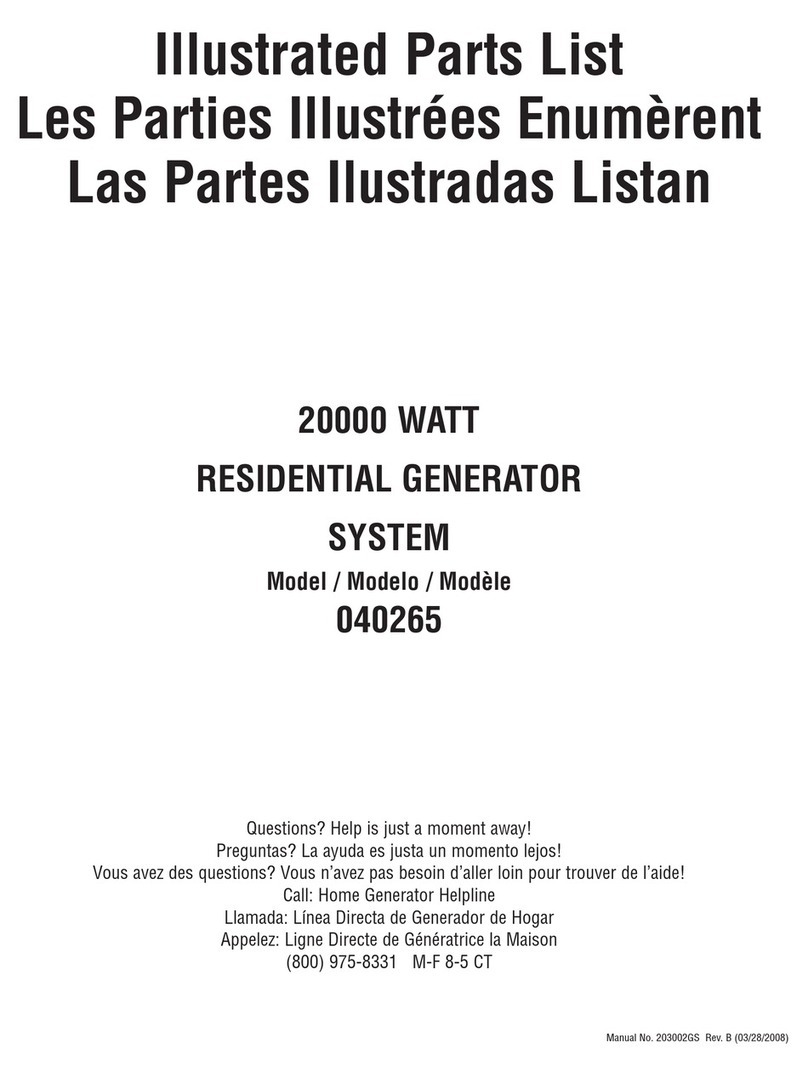Table of Contents
SECTION 1: SAFETY INSTRUCTIONS AND WARNINGS.......................... 1-1
1.1 Symbol Usage......................................................................................... 1-1
1.2 General Safety Precautions..................................................................... 1-2
SECCIÓN 1: INSTRUCCIONES DE SEGURIDAD Y ADVERTENCIAS……. 1-1A
1.1 Símbolo Uso…………………………………………………………………….1-1A
1.2 Precauciones generales de seguridad………………………………………1-2A
SECTION 2: CONTROLS AND FEATURES .................................................2-1
2.1 Generator.................................................................................................2-1
2. 2 Control Panel...........................................................................................2-2
2.3 Control Functions.....................................................................................2-3
SECTION 3: GETTING STARTED ................................................................3-1
3.1 Unpack the Generator..............................................................................3-1
3.2 Adding Engine Oil.....................................................................................3-1
3.3 Adding Fuel..............................................................................................3-2
3.4 Starting the Engine...................................................................................3-4
3.5 Stopping the Engine.................................................................................3-6
SECCIÓN 3: PRIMEROS PASOS .................................................................3-1A
3.1 Desembale el generador..........................................................................3-1A
3.2 La adición de aceite del motor..................................................................3-1A
3.3 La adición del combustible.......................................................................3-2A
3.4 Arranque del motor...................................................................................3-3A
3.5 Parada del motor......................................................................................3-5A
SECTION 4: ELECTRICAL CONNECTION...................................................4-1
4.1 Capacity ...................................................................................................4-1
4.2 Power Maintenance .................................................................................4-1
4.3 Connecting Electrical Loads.....................................................................4-1
4.4 Battery Charging……………………………………………………………….4-2
4.5 Wattage Reference Guide…………………………………………………….4-3
SECCIÓN 4: CONEXIÓN ELÉCTRICA .........................................................4-1A
4.1 capacidad.................................................................................................4-1A
4.2 el poder de mantenimiento.......................................................................4-1A
4.3 Conectar las cargas eléctricas .................................................................4-1A
4.4 carga de la batería ...................................................................................4-2A
4.5 Guía de referencia de potencia ...............................................................4-3A
SECTION 5: MAINTENANCE........................................................................5-1
5.1 Periodic Maintenance...............................................................................5-1
5.2 Spark Plug Maintenance..........................................................................5-2
5.3 Engine Oil Replacement...........................................................................5-3
5.4 Air Filter Maintenance...............................................................................5-4
5.5 Muffler Screen & Spark Arrestor Maintenance.........................................5-5
5.6 Fuel Filter Maintenance............................................................................5-6
SECCIÓN 5: MANTENIMIENTO ...................................................................5-1A
5.1 Mantenimiento periódico .........................................................................5-1A
5.2 Chispa de mantenimiento Plug ................................................................5-2A
5.3 Motor de cambio de aceite ......................................................................5-3A
5.4 Mantenimiento del filtro de aire ...............................................................5-4A
5.5 Silenciador de pantalla y mantenimiento de chispas ...............................5-5A
5.6 Mantenimiento del filtro de combustible ..................................................5-6A
